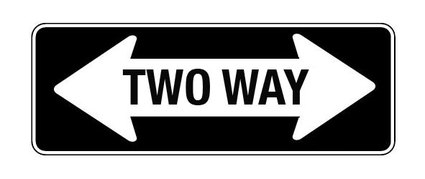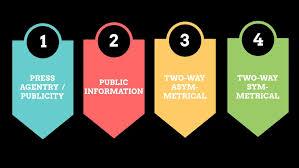We are just a few weeks into teaching on the MA in Media and PR at Newcastle – and times have changed. Students and teachers alike are getting used to online learning and the challenges and opportunities that brings about.

But one thing has not changed – and that’s the early discussions around what public relations is and what it isn’t – and the million dollar question – is Grunig’s excellence model of 2-way symmetrical communication a reality or just an aspiration?
This semester, we have been making good use of weekly consolidation hours with students to debate these issues and the online discussion forum has never been busier. So I thought it useful to share some perspectives from our new students. Generally, the view is that 2 way symmetrical comms, remains an ideal. Here is what some of our students said:

Zinyi suggests 2 way symmetrical communication can be found at a local level, particularly within internal comm where open door discussions allow for balanced conversations to share experiences. “This is a win-win communication model for a strong collaborative organisation. But …. there is no ideal model of risk communication, only more satisfactory realistic choices.”
Lara believes symmetry is achievable but is difficult. Firstly, it would force some companies to switch their culture and values into a totally new arrangement, where the focus should be on customer-orientation rather than the product/service, production or sales orientation. Secondly, whilst Web 2.0 and social media made it easier for PR and organisations to listen to their publics without so many interferences or mediations, there are too many people talking and requesting different things – which makes it much harder for PRs and organisations to accommodate everyone’s demands. And finally, it is much wider if we think not only about customer’s needs but take into consideration all kind of publics of each organisation.
Lara cited an example of Netflix in Brazil which started to add Harry Potter movies to its catalogue following requests from customers – although this decision could be reversed! She also talks about the need for diversity within senior management and board level in large institutions – and until that is achieved then symmetrical communication with less represented publics remains an ideal.

Tongtong mentioned difficulties with measuring and evaluating PR outcomes in his view that symmetrical communication is an aspiration. If we take quantitative measurement into consideration, it will be easy to judge. This standard depends on the ratio of earned benefits of each side in the 2-way communication. If the ratio is 50 to 50, it absolutely can be a perfect symmetrical communication, otherwise it’s asymmetrical. Take diplomacy as an example, there is usually a more developed and powerful region or country relying on its power, whatever economic or military, etc., forcing the other to compromise and accept the less benefit.
Jiayi offers an optimistic view and says: “2-way symmetrical communication can be a reality. We are now living in an age of advanced information technology, we have lots of online and offline platforms to gather information as well as share our voices. If organizations or companies always try to “manipulate” their clients or customers, people will find out one day. For example, tweets talking about bad services and cunning marketing strategies of a company can be viewed by thousands of people and even more. In a long term, the reputation of that company will break down and it will be rather difficult for the company to find a place in market. With that regard, if companies want to survive in severe competition, the better choice is to build balanced relationship with their customers and truly listen to them.” That sounds a lovely, but perhaps quite idealistic perspective.
And Jinai’s view: “I used to agree with this model, but it’s almost impossible to achieve because everyone has a different view of the world, there are hundreds or even thousands of interpretations of the same information text. How can we make sure that everyone’s understanding is exactly the same? At the same time, this model also reminds me of the “information cocoon” theory in communication. It may lead to more and more closed information and greater differences.”
Certainly, some food for thought with those closing comments.
